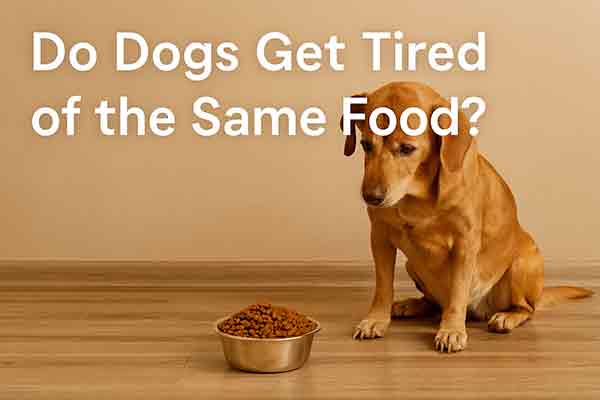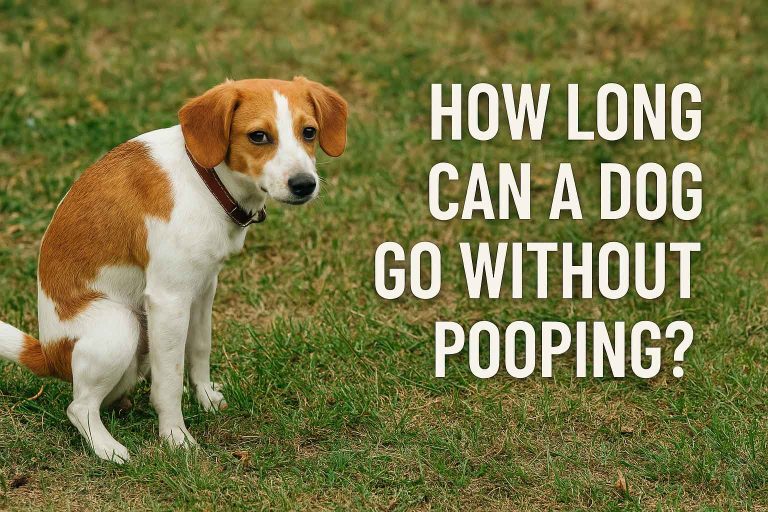Do Dogs Get Tired of the Same Food? | Understanding Canine Diet Preferences
Table of Contents
- Introduction
- Do Dogs Really Get Bored of Their Food?
- How Dogs Experience Taste and Smell
- Signs Your Dog Might Be Tired of Their Food
- Risks of a Repetitive Diet
- Benefits of Dietary Variety for Dogs
- How to Safely Introduce New Foods
- What Is Rotation Feeding?
- When to Talk to a Veterinarian
- FAQ
- Conclusion
Introduction
If you’ve ever wondered, “Do dogs get tired of the same food?”, you’re not alone. Pet parents often question whether their furry companions crave variety in their meals the way humans do. In this guide, we’ll explore canine eating habits, what science and behavior say about food boredom, and how to keep your dog’s diet balanced and interesting—without causing tummy troubles.
Do Dogs Really Get Bored of Their Food?
Dogs can get bored of their food, but not in the same way humans do. While dogs don’t require a constantly changing menu, some do show signs of disinterest when fed the same thing for extended periods. Factors like smell, texture, and routine all play roles in how much your dog enjoys mealtime. Some dogs are perfectly happy with consistency, while others may benefit from variety.
How Dogs Experience Taste and Smell
Dogs have fewer taste buds than humans—about 1,700 compared to our 9,000—but their sense of smell is far more powerful. This means they often rely more on aroma than flavor. If food smells the same every day, it might eventually become less appealing. Also, dry kibble may become less attractive if it’s stale or poorly stored.
Signs Your Dog Might Be Tired of Their Food
While picky eating can sometimes indicate a medical issue, these are common signs that your dog is bored with their current food:
- Sniffing but not eating
- Walking away from the bowl
- Eating only when extremely hungry
- Excitement for treats but not meals
- Sudden change in appetite without illness
Risks of a Repetitive Diet
Feeding your dog the same food indefinitely can have drawbacks:
- Nutrient gaps: Even complete and balanced formulas can lack diversity in micronutrients.
- Food allergies: Constant exposure to one protein source can increase the risk of developing sensitivities.
- Reduced digestive adaptability: Dogs on single-source diets may struggle to adjust to new foods later.
Benefits of Dietary Variety for Dogs
Introducing safe variety into your dog’s diet can offer several benefits:
- Broader range of nutrients and antioxidants
- Reduced risk of allergies or food intolerance
- Improved digestive resilience
- More excitement and anticipation at mealtimes
How to Safely Introduce New Foods
Changing your dog’s diet too quickly can cause stomach upset. Follow these steps:
- Start by mixing 25% new food with 75% old food for 2–3 days
- Increase to 50/50 for another 2–3 days
- Then 75% new, 25% old for 2–3 days
- Switch to 100% new food by day 7–10
Always monitor for signs of digestive distress such as diarrhea, vomiting, or excessive gas.
What Is Rotation Feeding?
Rotation feeding means alternating between different proteins, recipes, or brands on a regular schedule (weekly, monthly, etc.). This method helps keep your dog’s gut adaptable and engaged while ensuring they receive a more diverse nutritional profile. Rotation can involve:
- Switching protein sources (chicken, beef, fish, lamb)
- Alternating between kibble, wet, raw, or freeze-dried foods
- Adding toppers like pumpkin, bone broth, or green veggies
When to Talk to a Veterinarian
If your dog suddenly stops eating or shows signs of food aversion, consult your vet. Loss of appetite can signal:
- Dental issues
- Gastrointestinal problems
- Kidney or liver conditions
- Anxiety or environmental stress
Your vet may also recommend a nutritionist for creating a rotational diet plan tailored to your dog’s specific needs.
FAQ
Should I change my dog’s food regularly?
Not necessarily, but offering safe variety can support better health. If your dog tolerates change well, rotation feeding is a great option.
What if my dog won’t eat new food?
Try gradual introduction and consider warming the food slightly to enhance aroma. Some dogs need time to accept change.
Can I add human food to make meals more exciting?
Yes, in moderation. Dog-safe options include plain chicken, pumpkin, sweet potatoes, and green beans. Avoid onions, garlic, and anything seasoned.
Are picky dogs unhealthy?
Not always. Some dogs just have preferences, but chronic picky eating could indicate medical or behavioral concerns.
How can I tell if my dog is getting bored with food?
Look for a gradual decline in eating enthusiasm, slower eating, or refusal to eat without added toppers or treats.
Conclusion
So, do dogs get tired of the same food? While not all dogs require variety, many do benefit from it—both for health and engagement. Whether you stick with one brand or opt for a rotation feeding plan, the key is to observe your dog, adjust based on their reactions, and consult your vet if you’re unsure. A happy, well-fed dog is a healthier dog—and mealtime should be something they look forward to.
Explore our blog for more canine nutrition tips, feeding guides, and trusted recommendations from pet care experts.







